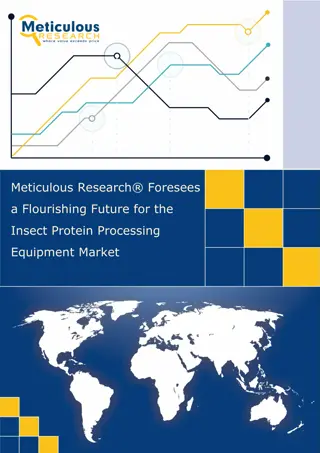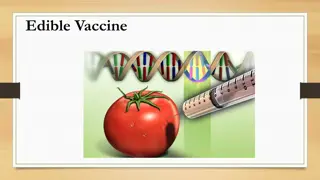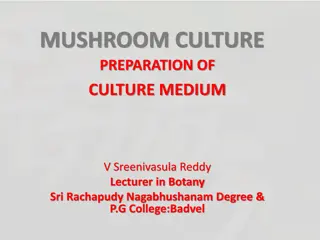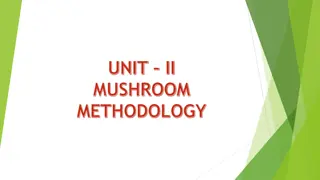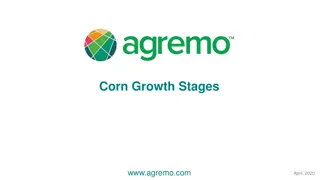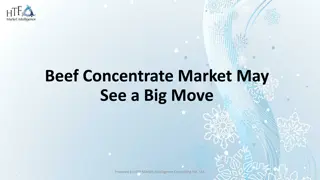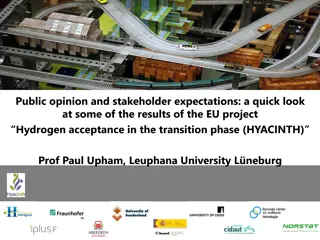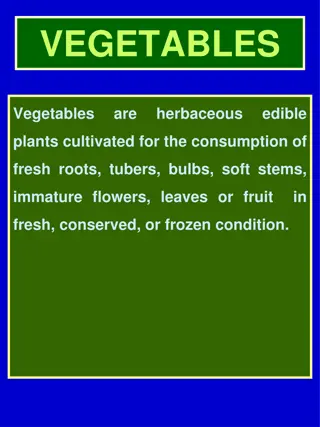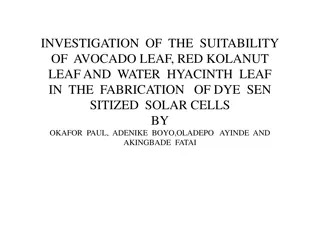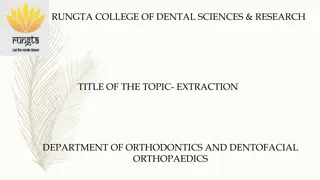Extraction of Edible Leaf Protein Concentrate from Water Hyacinth
Water hyacinth, an aquatic weed infesting water bodies, was studied to convert it from a nuisance to a valuable resource. Edible leaf protein concentrate was extracted and analyzed for composition and amino acid profile. Feeds formulated using the concentrate showed positive growth response in rats, indicating its potential as a raw material for the food and beverage industry.
Download Presentation

Please find below an Image/Link to download the presentation.
The content on the website is provided AS IS for your information and personal use only. It may not be sold, licensed, or shared on other websites without obtaining consent from the author. Download presentation by click this link. If you encounter any issues during the download, it is possible that the publisher has removed the file from their server.
E N D
Presentation Transcript
Extraction of Edible Leaf Protein Concentrate from Water Hyacinth Oyeyemi Adeyemi Federal University of Petroleum Resources, PMB 1221, Effurun. Delta State, Nigeria.
ABSTRACT Water hyacinth (Eichhonia crassipes) is one of the aquatic weeds. It infests rivers, dams, lakes and irrigation channels on every Antarctica. The coverage of water ways by water hyacinth devastates aquatic environment and costs billions of dollars every year as control costs and economic losses. continent except
ABSTRACT In these days of diminishing natural resources, it has become necessary to investigate the existing resources in water hyacinth for production of food, food additives, pharmaceuticals and raw materials for agro-allied industries. The aim of this study was to convert water hyacinth from an environmental nuisance to a natural resource that is in high demand. Edible form of water hyacinth leaf protein concentrate (WHLPC) was extracted.
ABSTRACT The alkaloids and phenolic compounds of the WHLPC were determined. Proximate composition and amino acid profile of the WHLPC were analyzed evaluated. The WHLPC was used to formulate feed using different concentrations (7.73, 15.46, 23.19, and 30.92) %w/w. A control feed was formulated with soybean (15.46%w/w) in place of WHLPC. physicochemical characteristics, total and the LD50
ABSTRACT The resulting feeds were fed to different groups of rats over a period of twenty (20) weeks and the growth was monitored. Growth response curve of rats placed on formulated feed showed positive slope. At the end of the experiment, rats in various groups gained weight, gain in body weight measured in Control rats (55.35 g), WHLPC1 rats (57.75 g) were not significantly different (p>0.05). Data revealed that WHLPC is a potential raw material for food and beverages industry.
Study Area . The study area (River Ijana) is located within longitude 5.540E and 5.70W and latitude 5.310N and 5.60S as shown in Figure 1.
Figure 1: Map of Warri Showing the Sample Collection Area (River Ijana)
Extraction of WHLPC The method described by Wenbiao and Yanling (2010) was modified and used. The water hyacinth leaves collected from Ijana River were thoroughly washed in water, and blanched for 5mins with 5% acetic acid, in a heating mantle. The leaves were then rinsed in de-ionized water and allowed to dry at room temperature.
Extraction of WHLPC Furthermore, the leaves were soaked in 95% ethanol for 6hrs to remove the fat and then dried in an incubator at 45 C to obtain the water hyacinth leaf protein concentrate (WHLPC). The now formed water hyacinth leaf protein concentrate (WHLPC) was ground in a Teflon base grinder and stored in an air tight container, for further analysis.
Other methods Heavy metal analysis of WHLPC was done with an Atomic Absorption Spectrophotometer (AAS), using the American Public Health association (APHA, 1995) guidelines. Concentration total alkaloids of WHLPC was determined by the method described by Harbone (1973). The proximate analysis of water hyacinth leaves was carried out according to the method described by AOAC (2005).
Table 1: Ingredient composition (%) of the experimental diets Group Corn starch Protein sources Soy oil Fish meal Vitamins + Minerals 1.32 1.32 1.32 1.32 1.32 Control WHLPC1 WHLPC2 WHLPC2 WHLPC3 60 60 60 60 60 15.46* 7.73 15.46 23.19 30.92 8 8 8 8 8 15.22 22.71 15.22 7.49 0.00 WHLPC Water hyacinth leaf protein concentrate *Soy protein
Table 2: Heavy metal composition of Water hyacinth leaf protein concentrate Metal Concentration *Upper limit (mg/kg) (mg/kg) Cd 0.02 0.001 0.05 Cr 0.13 0.001 1.0 Pb 0.001 0.00 0.1 Pt 0.001 0.00 0.1 Pd 0.003 0.001 0.1 Sn 0.001 0.00 0.1 Hg 0.02 0.001 0.05
Fe 0.001 0.00 5.0 Mn 0.001 0.00 0.05 Cu 0.001 0.00 0.5 Zn 0.001 0.00 24.0 Ni 0.001 0.00 0.5 Co 0.001 0.00 1.0 *Source: WHO (1989)
Table 3: Proximate composition of Water hyacinth leaf protein concentrate Nutrient Concentration (%) Protein 56.38 2.15 Fat 4.11 0.55 Ash 4.88 0.24 Fibre 1.02 0.05 Carbohydrate 33.61 1.55 Each value represents mean SEM of five determinations.
Table 3.3: Amino Acid composition of Water hyacinth leaf protein concentrate Amino Acid Concentration FAO STANDARD (g/100g) (g/100g) Alanine 3.20 0.15 NA Arginine 3.80 0.23 NA Aspartic acid 4.96 0.25 NA Cysteine 0.72 0.01 NA Glutamic acid 6.04 0.52 NA Glycine 3.00 0.12 NA Histidine 1.10 0.09 NA Isoleucine 2.29 0.32 4.2
Leucine 5.01 0.35 4.8 Lysine 3.72 0.48 4.2 Methionine 1.34 0.08 2.2 Phenylalanine 3.67 0.22 2.8 Proline 2.72 0.11 NA Serine 2.52 0.15 NA Threonine 2.60 0.17 2.8 Tyrosine 2.20 0.13 2.8 Valine 2.81 0.11 4.2 Each value represents mean SEM of five determinations. NA: Not Available
Table 4: Total Alkaloids and phenolic content of Water hyacinth leaf protein concentrate Phytochemical Concentration (mg/kg) 16.6 0.2 Total alkaloid 6.0 0.1 Phenolic compounds Each value represents mean SEM of five determinations.
Table 5: Results of LD50 test of Water hyacinth leaf protein concentrate Dose Short-term Long-term (g/kg.bw) result (48 h) result (12 days) Rat ID A 3.25 Survival survival B 8.37 Survival survival C 17.51 Survival survival D 21.50 Survival survival
77 67 57 Weight (g) I II 47 III IV V 37 27 17 WK0 WK5 WK10 WK15 WK20 Period (Weeks) Figure 2. presents the growth response of rats placed on feed formulated with water hyacinth leaf protein concentrate (WHLPC) over a period of twenty weeks.
CONCLUSION Experimental evidence from the present study revealed that; Water hyacinth is a good source of leaf protein concentrate The water hyacinth leaf protein concentrate (WHLPC) is nutritious as evidenced by proximate composition
CONCLUSION WHLPC contains alkaloids and phenolic compounds at physiologic amounts WHLPC is not acutely toxic as revealed by the studies on LD50 WHLPC supports normal growth in rats and compared favourably with soybean









